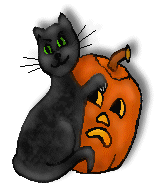


Family Network


|


Family Network


|
|
 Happy New Year

Halloween Traditions  Halloween in Scotland
In Scotland they continued to practice their deep-rooted, ancient pagan rites well after the arrival of Christianity in the middle of the sixth century. The Church fathers had become concerned that the popularity of non-Christian festivals was growing at the expense of Christian holy days.
Pope Gregory I, in 601 issued a decree to his missionaries about the faith and customs of the people whom he wanted to convert to Christianity. Gregory knew that it would be impossible to eradicate the beliefs of the natives totally and so suggested to his priests that they "convert" them whenever possible.
If the native people worshipped at a well, or sacred grove, Gregory informed his missionaries to enshrine them to Christ and let the worship continue.
Gregory's successor Pope Boniface IV in 609, declared May 13 All Saints' Day. Unfortunately, while pagans were happy to add All Saints' Day to their calendar, they were unwilling to give up their existing festival of the dead and continued to celebrate Samhain.
Intent on eliminating the ongoing power of the pagan beliefs, Pope Gregory III followed in the footsteps of the earlier Christian leaders and intentionally united the Christian All Saints' Day to the festival of Samhain. He then moved All Saints' Day to November 1, which became more commonly known as All Hallows. Because Samhain had traditionally fallen the night before All Hallows, it eventually became known as All Hallows' Even' or Hallowe'en.
Previous church leaders to Gregory III discouraged the Samhain tradition of wearing frightening costumes, but Gregory decided instead to allow people to dress up in honor of the saints. Other traditions, such as begging for food and kindling, were made legal by the Church, providing that any food that was given to the beggars would be given to the poor, rather than to appease the spirits.
The Church also added a second day to the festival, this fell on November 2 and was called All Souls' Day and was dedicated to the souls of those who are still left in purgatory. These souls had to endure the punishment of purgatory for their sins. It was believed that the lighting of candles and the saying of prayers for the dead would shorten the time they were to suffer in purgatory before they would rise to heaven.
In Scotland Soul Cakes were known as Dirge Loaves and were flat, round buns of oat flour.
Scottish superstitions ran deeper and darker than most. In memory of the fact that Scotland had been the only country to burn to death its supposed witches, children in Aberdeenshire would run around their villages, banging on doors and shouting. This practice continued until the early twentieth century.
Effigies of witches were burned on the Halloween bonfire. A dummy of an old woman called the shandy Dan was wheeled in a cart to the center of a large gathering of villagers and then tossed onto the fire with much celebration.
Children once also enjoyed throwing cabbages and turnips at doors at Hallowe'en time.
They also smashed bottles near windows.
Mens.Net | Womens.Net | Mothers.Net | Fathers.Net | Grandparents.Net | Teenagers.Net | Santas.Net | EasterBunnys.Net | JackOLanterns.Net | FatherTimes.Net | StValentines.Net HarvestFestivals.Net | BirthdayCelebrations.Net | ToothFairys.Net
 Please read our Legal Statement and Privacy Policy.
|